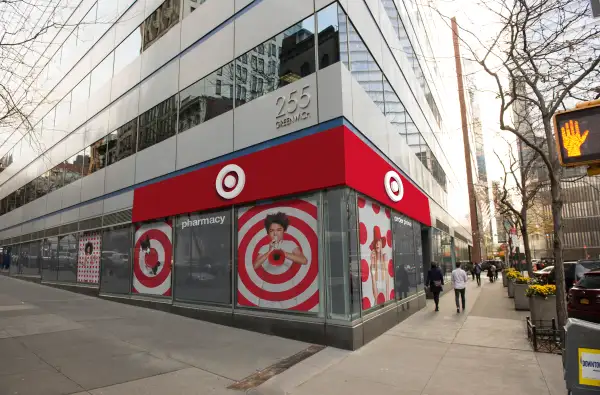Why Target Is Focusing on Millennials and Cities Instead of Suburban Moms

Target became a retail success as the industry's cheap-chic darling. But it's been a long time since shoppers referred to Target as "Tarjhay," and people nowadays aren't likely to think of the chain as particularly cheap or chic compared to its peers in the online and physical retail space.
Target's sales have been poor in 2016, but unlike struggling retailers like J.C. Penney and Macy's, which are closing stores like crazy, Target continues to open new locations. In particular, Target is expanding with smaller new stores like the one that opened in the Tribeca neighborhood of New York City on Wednesday. It's 45,000 square feet, about one-third the size of a typical Target, and downright tiny compared to some SuperTarget stores that spread over 175,000 square feet. Three other small Targets are opening this week, in the downtowns of Philadelphia and Cupertino, Calif., and in the vicinity of Penn State University.
The smaller store concept “allows us to get into those dense neighborhoods, such as Manhattan, where we couldn’t put a large typical store," Tony Roman, Target senior group vice president, told USA Today. “It gives us more flexibility.’’
In fact, a quick look at Target's planned store openings in 2016, 2017, and 2018 shows that nearly all of its 30 new locations are small (most under 50,000 square feet, some only 20,000) and will be found in college towns or densely populated urban areas. This is by design, and the expansion is not being undertaken merely in reaction to some bad quarterly sales results in 2016.
Read Next: 5 Reasons Why Fewer People Are Shopping at Target
Instead, the Tribeca Target and its small Target siblings embody a shift in the company's focus that's been years in the making. The goal is to try to boost business by winning over millennials and residents of big cities—neither of whom have been big Target fans in the past.
For several years, Target has acknowledged that it needs to expand beyond its core shopper, a suburban mom driving a minivan. Today's wealthy American homeowners are more likely to be shopping at Amazon than any physical store than they were in the past. It especially makes sense, then, that Target opened locations like a 20,000-square-foot "TargetExpress" store in the neighborhood around the University of Minnesota in 2014. The overarching trend is that Target is closing poorly performing large stores in the suburbs, while expanding with smaller retail locations where college students and millennials live.
“We could see hundreds of these,” Target CEO Brian Cornell said to the Wall Street Journal. “It could be a huge part of future growth outlook over time.”
Target is not unique in its strategy of going small. Multiple supermarket chains have been experimenting with stores with half their usual square footage, as have retailers like Office Depot, Best Buy, and Walmart. But it's no recipe for success. Not long ago, Walmart announced that its small-store Walmart Express format was basically a failure, closing all of its locations in 2016.
Target obviously hopes its small-store push goes differently. It is different in that Target's small stores aren't quite as small as the typical Walmart Express (15,000 square feet), and that whereas Walmart's tiny stores were mostly located in the suburbs and poorly populated areas, Target is targeting territory that's loaded with foot traffic.
Read Next: Why Walmart’s Small ‘Express’ Store Format Was Such a Big Failure
Target can't simply squeeze in its usual all-purpose shopping selection into its smaller college town and urban stores. For instance, there is no automotive section in the New York City store. Toilet paper may be sold in single rolls rather than by the dozen. As local publication Tribeca Citizen reported, though, the new Tribeca store has sections devoted to groceries, apparel for men, women, and children, a CVS pharmacy, and a Chobani café for on-the-go snacks. Similarly, a 19,000-square-foot Target that opened this past summer in city center Philadelphia features a Starbucks.
As for what'll make college town Target stores different from the usual Targets, shoppers may notice that there's no toy section, and the ping-pong balls are located right next to the beer.
